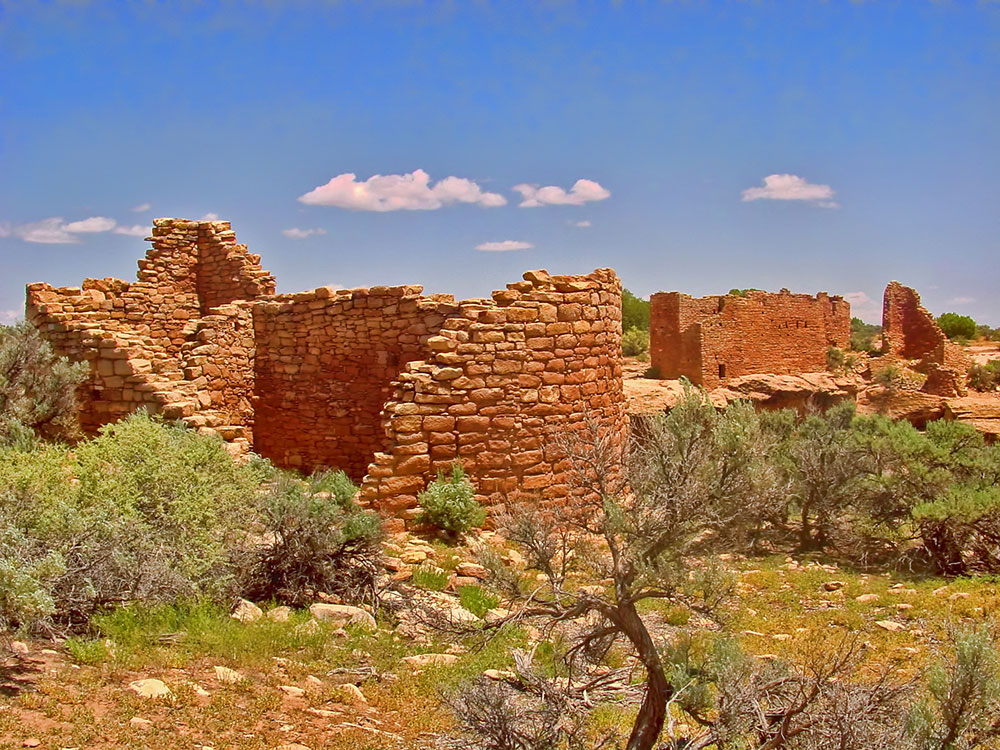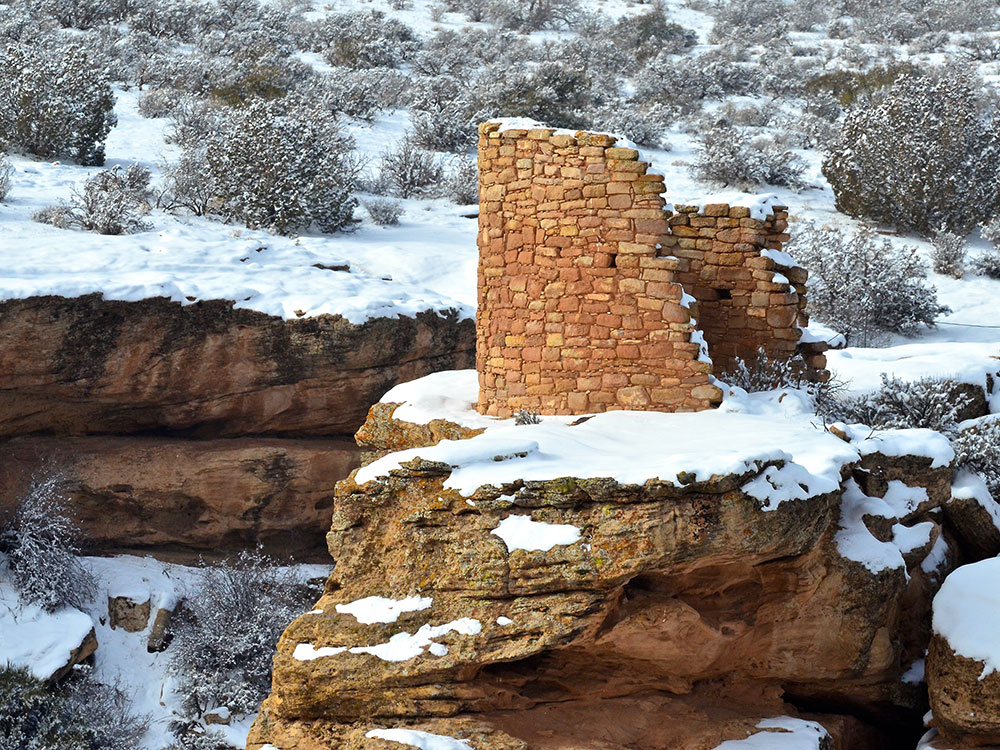Monument is located in southwestern Colorado between Cortez, Colorado and Blanding, Utah, largely known for the six groups of Ancestral Puebloan villages
Overview
Hovenweep National Monument is located on land in southwestern Colorado and southeastern Utah, between Cortez, Colorado and Blanding, Utah on the Cajon Mesa of the Great Sage Plain. Shallow tributaries run through the wide and deep canyons into the San Juan River.
Although Hovenweep National Monument is largely known for the six groups of Ancestral Puebloan villages, there is evidence of occupation by hunter-gatherers from 8,000 to 6,000 B.C. until about AD 200. Later, a succession of early puebloan cultures settled in the area and remained until the 14th century.
-1000.jpg)
Hovenweep became a National Monument in 1923 and is administered by the National Park Service. In July 2014, the International Dark-Sky Association designated Hovenweep an International Dark Sky Park.
In 1854, William D. Huntington, on a missionary trip to the southwestern United States for Brigham Young, discovered the ruins of the present Hovenweep National Monument. The ruins were already known to the Ute and Navajo guides who considered them haunted and urged Huntington to stay away.
The name Hovenweep, which means "deserted valley" in the Ute language, was adopted by pioneer photographer William Henry Jackson and William Henry Holmes in 1878. The name is apt as a description of the area's desolate canyons and barren mesas as well as the ruins of ancient communities.
This article uses material from the Wikipedia article "Hovenweep National Monument", which is released under the Creative Commons Attribution-Share-Alike License 3.0


-1000.jpg)